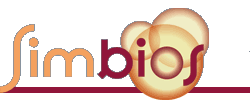|
Simbios Talk by Craig Cornelius , Stanford University, May 2, 2006 Title: SPRING: An Open Source Surgical Simulation Architecture Abstract: While physical devices ("box simulators") can be used for many basic skills, software-based virtual reality trainers have the important advantages, including data recording, analysis, and objective scoring if surgeons' individual performances, as well as allowing more complex scenarios than with conventional trainers. SPRING is a software platform for creating and running surgical training. Using files in 3-D and virtual reality standard formats, SPRING simulations model rigid and deformable tissues and their interactions with simulated laparoscopic tools. Designed as an inherently networked set of application programs, SPRING supports single or multi-user scenarios, and also incorporates force feedback through haptic interfaces. It supports connections to local and remote computing resources, supports collaborative learning, and provides distribution of images to multiple learners. Originally developed by Dr. Kevin Montgomery of the NASA-Stanford National Biocomputation Center (http://biocomp.stanford.edu), SPRING has been released as an open source package for non-profit use. The software is written in standard C++ and is available on Windows, UNIX, LINUX, and Macintosh OS X platforms. SPRING employs OpenGL for maximum portability and interoperability across computing platforms. This talk will describe the suite of programs that comprise SPRING, including the architecture of SPRING's components, representations of tissues and tool models, physics of interaction between objects, and connection methods linking internal models with 3-D input / output devices. In addition, the on-going process of converting academic research software into an open source "product" will be discussed. |

